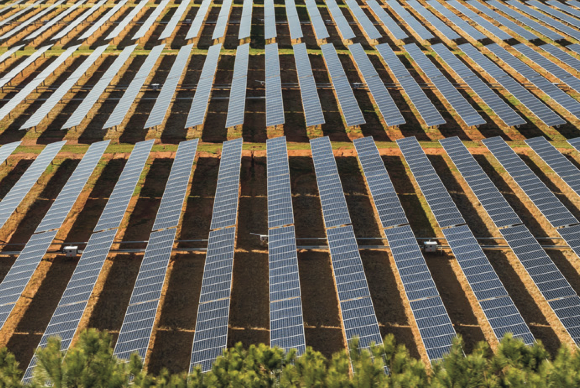 Among the updates comes the news that 145 of the company’s U.S. retail stores are now powered exclusively by renewable energy, as well as all 21 of the company’s stores in Australia. While that’s still less than half of the company’s more than 400 retail locations, Apple’s goal is to eventually convert all of them to green energy, even though it acknowledges the difficulty in doing so—for one thing, the company doesn’t generally own the buildings where its stores are located.
Among the updates comes the news that 145 of the company’s U.S. retail stores are now powered exclusively by renewable energy, as well as all 21 of the company’s stores in Australia. While that’s still less than half of the company’s more than 400 retail locations, Apple’s goal is to eventually convert all of them to green energy, even though it acknowledges the difficulty in doing so—for one thing, the company doesn’t generally own the buildings where its stores are located.
Those energy savings have an impact, though: The company’s bottom-line carbon footprint for energy usage declined 31 percent from fiscal 2011 to fiscal 2013, even as its overall consumption of power actually went up by 42 percent. And in Cupertino, in particular, the company’s corporate offices have saved 28.5 million kWh of electricity and 751,000 therms of natural gas over the last three years.
The extents to which Apple goes to think green are surprisingly deep: The company’s report notes that not only are half the vehicles in its corporate fleet hybrids, but even when Apple employees do travel, they’re provided with hybrid vehicle rentals where available. In order to obviate travel where possible, the company has, of course, installed video teleconferencing equipment at its major facilities around the world. (Or, presumably, uses FaceTime.)
That’s not the only place that Apple focuses on choosing green alternatives: In its U.S. offices, more than 98 percent of its office supplies use post-consumer recycled content; the janitorial supplies include 100-percent recycled paper; and even the standard office chair is up to 95 percent recyclable. Most of the food in its Cupertino cafeterias even comes from sources within 100 miles. (Given that Steve Jobs’s initial plan for the company’s new campus included restoring some of the fruit orchards that used to stand on the site, perhaps some foodstuffs in the future will come from even closer.)
Apple’s report also takes on a couple of the places where the company thinks it can do better. For one thing, its water consumption rose significantly in 2013—to 2.3 million cubic meters, or around 29 cubic meters per employee; that’s up from 20 cubic meters in 2012. In large part, that’s due to construction work on the new Apple campus in Cupertino. An increased need for cooling for servers and test equipment has also played a part.
Another area of intense scrutiny are carbon emissions from Apple’s manufacturing partners, which remain the biggest chunk of the company’s carbon footprint. The company says that it’s “committed to addressing” that, and that it’s already using this year’s data to move forward on further improvements


